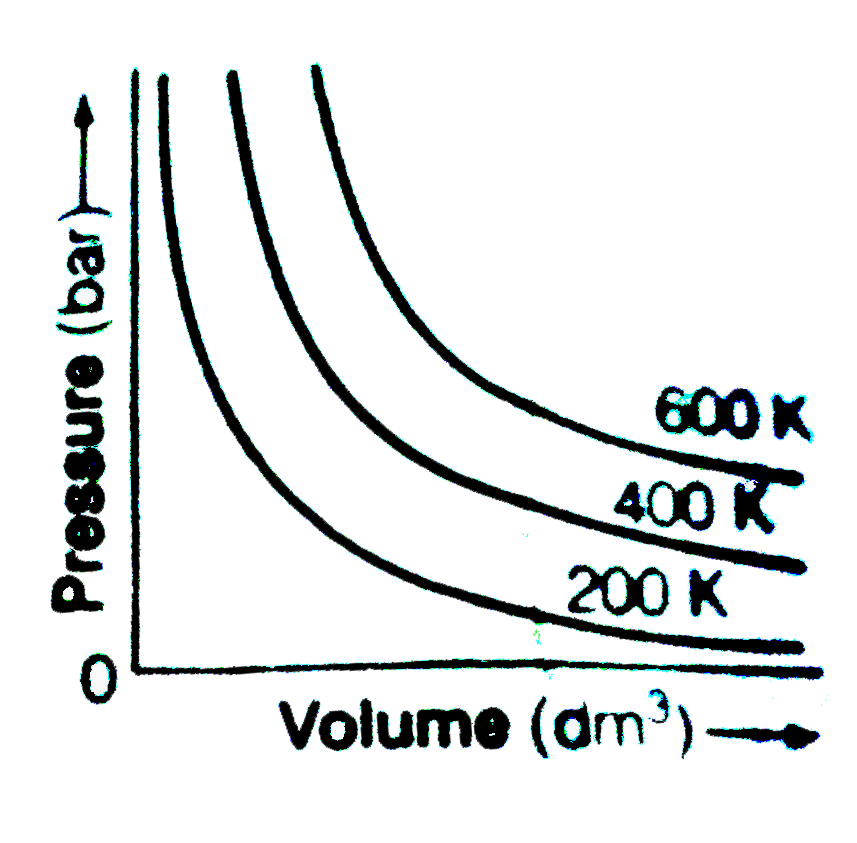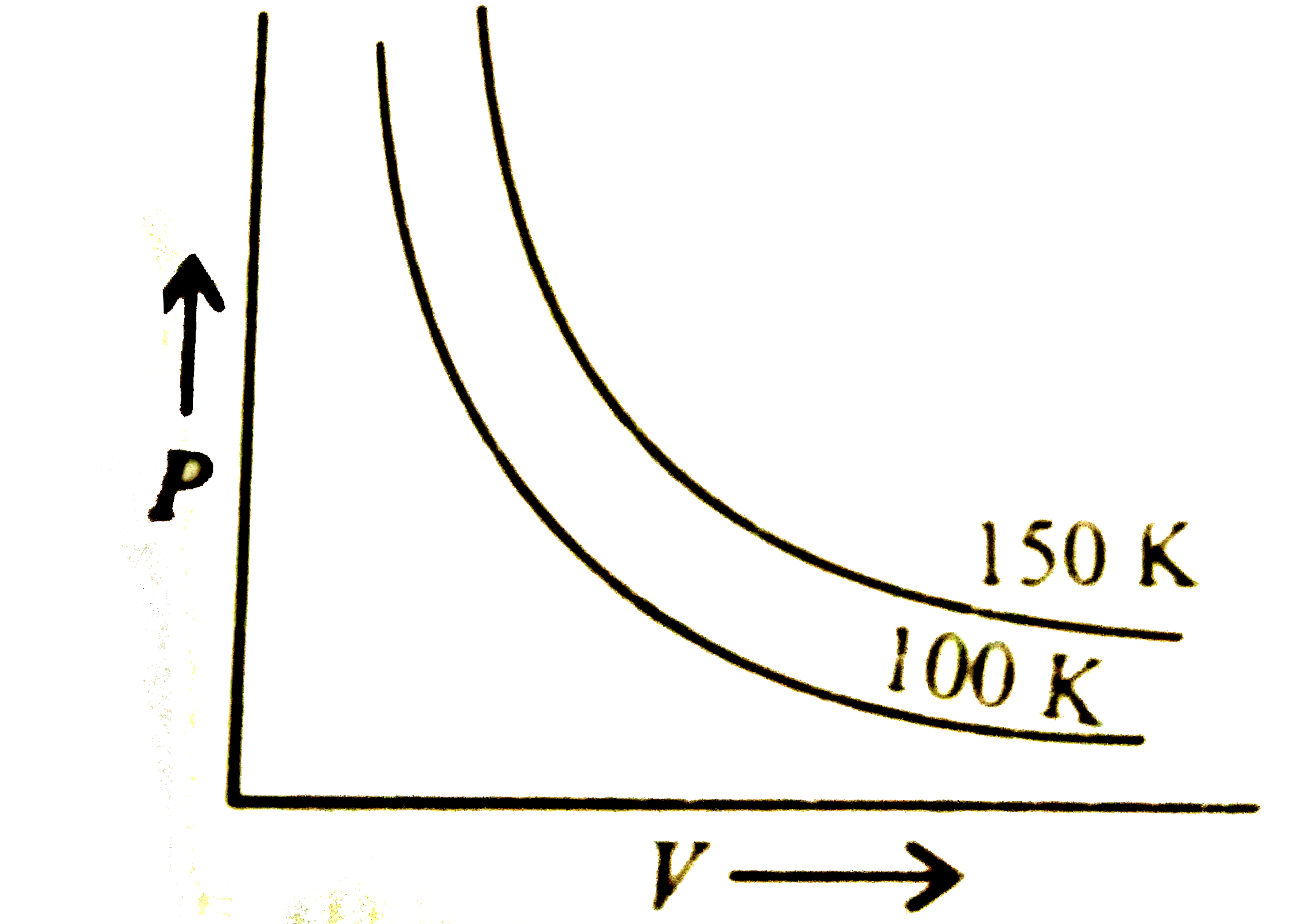What happen at increasing pressure at constant tempreture
Rate of Haber process decrease
Solubility of gas increase in liquid
Solubility of solid increases in liquid
C(s)+CO2(g)→2CO(g) reaction move forward
The correct Answer is:A
To answer the question "What happens at increasing pressure at constant temperature?" we will analyze the effects of pressure on different chemical processes and states of matter, particularly focusing on gases and their solubility in liquids.
1. Understanding the Relationship Between Pressure and Volume:
- According to Boyle's Law, at constant temperature, the volume of a gas is inversely proportional to the pressure exerted on it. This means that as pressure increases, the volume decreases.
2. Applying Le Chatelier's Principle:
- Le Chatelier's Principle states that if a system at equilibrium is subjected to a change in pressure, the equilibrium will shift in the direction that reduces the pressure. This typically means that the reaction will favor the side with fewer moles of gas.
- For example, in the Haber process (N₂ + 3H₂ ⇌ 2NH₃), there are 4 moles of gas on the reactant side and 2 moles on the product side. Increasing the pressure will shift the equilibrium towards the production of ammonia (NH₃), thus favoring the forward reaction.
3. Effect on Gas Solubility:
- According to Henry's Law, the solubility of a gas in a liquid is directly proportional to the partial pressure of that gas above the liquid. Therefore, as pressure increases, the solubility of gases in liquids also increases.
4. Effect on Solid Solubility:
- The solubility of solids in liquids is generally not significantly affected by changes in pressure. The solubility may change slightly depending on whether the dissolution process is exothermic or endothermic, but pressure has a minimal effect compared to temperature.
5. Conclusion:
- In summary, increasing pressure at constant temperature will:
- Favor reactions that produce fewer moles of gas (shift equilibrium to the right in the case of the Haber process).
- Increase the solubility of gases in liquids (according to Henry's Law).
- Have little to no effect on the solubility of solids in liquids.
Final Answer:
- The correct statement regarding the effects of increasing pressure at constant temperature is that the solubility of gases in liquids increases, while the solubility of solids remains largely unchanged.
- According to Boyle's Law, at constant temperature, the volume of a gas is inversely proportional to the pressure exerted on it. This means that as pressure increases, the volume decreases.
- Le Chatelier's Principle states that if a system at equilibrium is subjected to a change in pressure, the equilibrium will shift in the direction that reduces the pressure. This typically means that the reaction will favor the side with fewer moles of gas.
- For example, in the Haber process (N₂ + 3H₂ ⇌ 2NH₃), there are 4 moles of gas on the reactant side and 2 moles on the product side. Increasing the pressure will shift the equilibrium towards the production of ammonia (NH₃), thus favoring the forward reaction.
- According to Henry's Law, the solubility of a gas in a liquid is directly proportional to the partial pressure of that gas above the liquid. Therefore, as pressure increases, the solubility of gases in liquids also increases.
- The solubility of solids in liquids is generally not significantly affected by changes in pressure. The solubility may change slightly depending on whether the dissolution process is exothermic or endothermic, but pressure has a minimal effect compared to temperature.
- In summary, increasing pressure at constant temperature will:
- Favor reactions that produce fewer moles of gas (shift equilibrium to the right in the case of the Haber process).
- Increase the solubility of gases in liquids (according to Henry's Law).
- Have little to no effect on the solubility of solids in liquids.
- The correct statement regarding the effects of increasing pressure at constant temperature is that the solubility of gases in liquids increases, while the solubility of solids remains largely unchanged.
Similar Questions
Ice ⇌ Water
In which direction equilibrium will shift forward or backward on increasing pressure at constant temperature?
View SolutionIn which of the following reactions, increase in the pressure at constant temperature does not affect the moles at equilibrium?
View SolutionFor an exothermic reaction, what happens to the equilibrium constant if temperature is increased?
View SolutionThe oxidation of SO2 by O2 to SO3 is an exothermic process. The yield of SO3 is maximum if
i. Temperature is increased and pressure is kept constant
ii. Temperature is reduced and pressure is kept constant
iii. Pressure is increased
iv. Temperature and pressure both are increased
The correct option is:
View SolutionConsider the adsorption isotherm given below and interpret the variation in the extent of adsorption (xm) when
a. Temperature increased at constant pressure.
b. Pressure increases at constant temperature.
View SolutionWhat happens when a pressure greater than the atmospheric pressure is applied to pure water or a solution?
View SolutionWhat happens when a pressure greater than the atmospheric pressure is applied to pure water on a solution?
View SolutionThe variation of pressure with volume of the gas at different temperatures can be graphically represented as shown in figure. On the basis of this graph answer the following question.
(i) How will the volume of a gas change if its pressure is increased at constant temperature ?
(ii) At a constant pressure, how will the volume of a gas change if the temperature is increased from 200 K to 400 K ?

View SolutionThe dissociation of phosgene is represented as follows:
COCl2(g)⇔CO(g)+Cl2(g)
When a mixture of these three gasses at equilibrium is compressed at constant temperature , what happens to
the partial pressure of COCl2:
View SolutionA graph is plotted between pressure and volume at different temperatures . On the basis of the graph what changes will you observe in the volume if
(i) the pressure is increased at constant temperature .
(ii) the temperature is decreased at constant pressure .

View Solution
